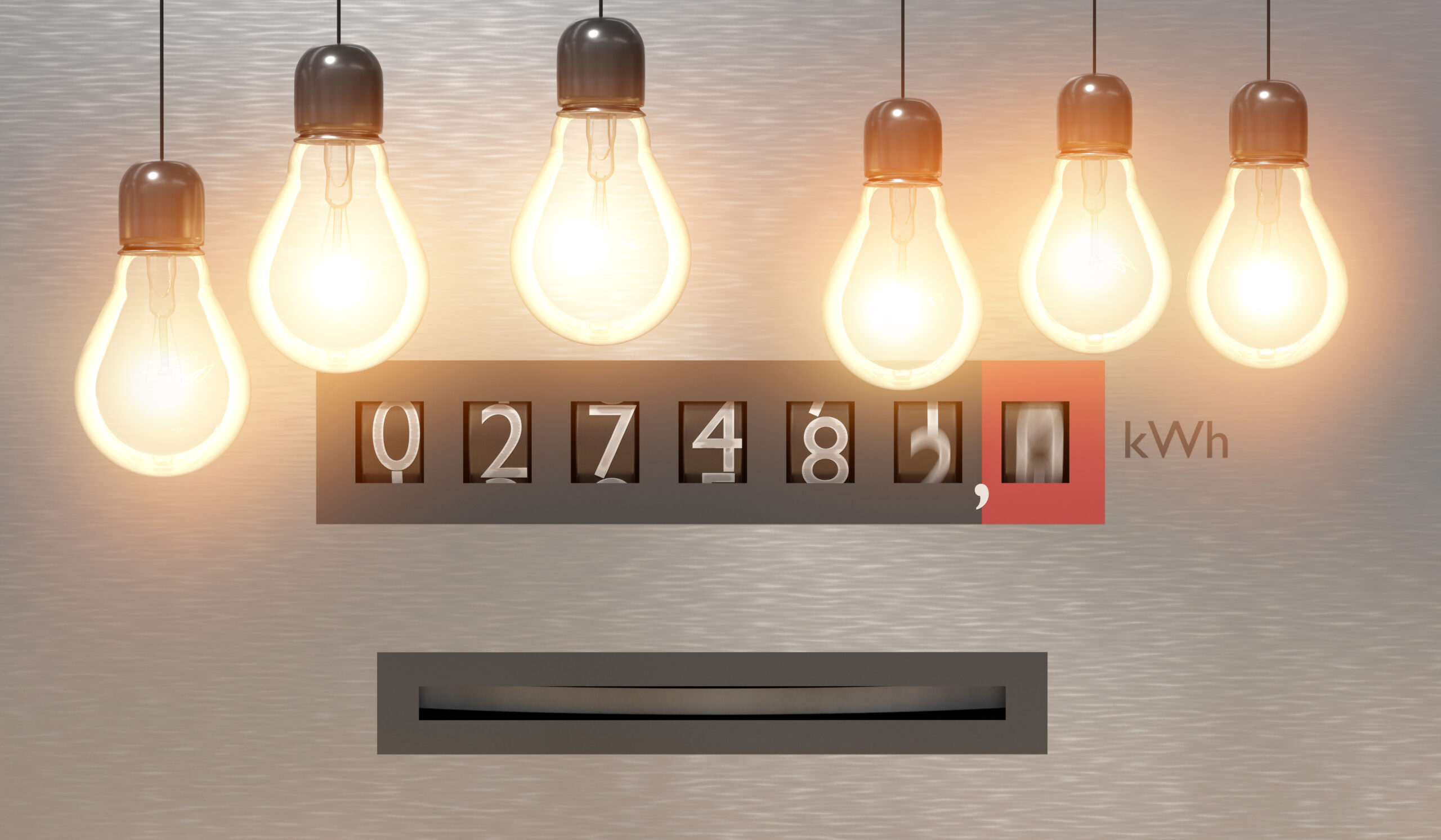Knowledge is power, and that goes for your electricity bill as well! Understanding your bill and how your retailer is setting their electricity rates can empower you to make sure you’re getting the best deal. If you live in Victoria, your rates are based on the Victorian Default Offer (VDO). Read on for a comprehensive guide about what the VDO is, why it was created and how it impacts your electricity prices.
This guide will cover:
- What is the Victorian Default Offer?
- Why was the VDO introduced?
- Who controls the VDO rates?
- How much are the VDO tariffs?
- How does the VDO help me?
- Is the VDO the best plan for me?
- What about my solar?
- Are there VDO tariffs for off-peak electricity usage?
- How do I find a cheaper electricity plan?
If you live in New South Wales, Queensland or South Australia, your rates are based on the Default Market Offer (DMO). You can read our guide to the DMO here.
What is the Victorian Default Offer?

The Victorian Default Offer (VDO) is an electricity price set by the Victorian government, rather than the electricity retailers. There are two key purposes the VDO fulfils:
- Protecting customers from high prices – the VDO is a protective measure from the Victorian government to make sure that all customers have access to fair electricity rates and to ensure that those who are unwilling or unable to engage in the electricity market are not paying unfairly high prices on expensive standing offers.
- Transparency on discounts – the VDO is the base rate, or reference price, that all Victorian energy plans must base their market offers on. This allows consumers to easily compare deals from multiple retailers and prevents retailers from artificially reducing prices to mislead customers with fake discounts.
The VDO is part of a wider government initiative called the Energy Fairness Plan that works to make energy simpler and more affordable to households and small businesses across the state.
Why was the VDO introduced?
The VDO was introduced in 2019 after years of increasing energy costs that were double the rate of inflation. An independent review conclusively showed that Victorians were paying unreasonably high electricity prices. In order for the Victorian government to protect consumers, they created the VDO as a reference price to hold retailers accountable and ensure everyone has access to fair electricity rates.
Victorian electricity network businesses were privatised from 1995 to 1996, meaning that after that point, the cost of Victorian electricity was deregulated and determined by market competition. Although the increase in rates can’t be blamed solely on privatisation (it was happening all across the country, even in states where electricity wasn’t wholly privatised), it did mean the government needed to step back into the energy sector and create controls to ensure all consumers have access to electricity at a fair and reasonable price.
With the VDO, the cost of electricity is set by an independent energy regulator rather than the retailers or the free market, ensuring Victorians can’t be left with unaffordable essential services.
Who controls the VDO rates?

The VDO price is set by the Essential Services Commission (ESC). The ESC is an independent regulatory body that oversees the price, quality and reliability of essential services in the long-term interests of Victorians.
As well as price determination for the VDO, the ESC regulates the energy, water and transport sectors in Victoria and the Victorian Energy Upgrades (VEU) program which is working to reduce greenhouse gases and make energy efficiency more affordable.
How much are the VDO rates?
The ESC reviews the price of the VDO every year to make sure it reflects a fair price in the current market.
The rate you will pay as a customer on the VDO depends on the distribution zone you live in. This is because the VDO gauges the different costs of supplying power to different areas.
The 2021-2022 VDO residential flat rates can be seen on the Essential Services Commission website, and are summarised below.
| Distribution zone | Supply charge
($ per day) |
Usage charge
($ per kWh) |
Controlled load
($ per kWh) |
| AusNet Services | $1.2600 | $0.2649
$0.2811 |
$0.1834 |
| CitiPower | $1.2023 | $0.2171 | $0.1542 |
| Jemena | $1.1491 | $0.2307 | $0.1756 |
| Powercor | $1.3459 | $0.2235 | $0.1578 |
| United Energy | $1.0634 | $0.2242 | $0.1590 |
NB: There are also VDO single rate tariffs available for small business customers who use less than 40 MWh per year.
How does the VDO help me?

Simply put, the VDO is a maximum price cap on how much energy retailers can charge consumers for electricity. This cap means consumers who are not actively engaged in the market can no longer be charged expensive standing rates. In July 2019, the introduction of the VDO meant that all customers on standing offer rates were automatically moved on to the VDO tariffs. There are approximately 120,000 residential customers and 30,000 small businesses in Victoria connected to the VDO.
This change has meant some substantial savings for consumers. The ESC estimates that the VDO saves an average Victorian household between $200 and $330 a year on their electricity bill, compared to what they would pay on the old standing offers. And it’s even better news for small businesses, who are estimated to save between $1,000 and $1,600 by being moved to the new VDO rates.
If you’re a Victorian household or small business and you haven’t reviewed your bill in the last few years, then you are most likely benefiting from this change already, and you might have noticed your electricity bill drop in 2019 – that was the VDO at work!
If you live in an apartment block, retirement home, caravan park, or if you run your small business as a tenant in a shopping centre, the VDO is there to help you too. From 1st September 2020, a new rule came into effect that means you can’t be charged more than the VDO to receive your electricity as part of an embedded network. The Victorian government is committed to banning embedded networks in newly built apartment complexes, to further protect electricity users from high prices.
Is the VDO the best plan for me?
In short, no, the VDO is probably not the best deal you can get on your electricity. Although the VDO is set at a competitive rate, by design it has been created to protect customers who are not actively involved in the market. The price of the VDO is deemed to be a fair price, but not necessarily the cheaper offer, so if you are opted into the VDO, you are free to leave at any time to access a better offer.
There are rewards out there for Victorian energy consumers who are willing to put in the effort and research to find a good deal. Electricity retailers have a range of market offers that give discounted rates and special offers which are usually cheaper than the VDO, plus, a new rule means they must tell you on your bill (at least every 3 months) if you are on their best offer.
Finding the plan that is best for you depends on a number of factors, such as your energy usage habits and location. Energy retailers also regularly have special offers for new customers, so it’s worth reviewing your electricity plan at least every 12 months to take advantage of the newest offers on the market. If you’re not sure where to start, contact CheapBills and we can do the hard work for you!
What about my solar?

The VDO does not provide rates for solar feed-in tariffs, so if you have solar panels in your home it’s important to compare providers to make sure you are getting the best deal for the energy you provide back to the grid. Contact CheapBills to help you compare the leading solar energy plans in Australia. The rate you pay for the electricity you use from the grid will be capped by the VDO or will be determined by the market offer you are on from your electricity retailer.
Are there VDO tariffs for off-peak electricity usage?
Yes, the VDO has rates for off-peak electricity. In September 2021, the ESC introduced the ‘two-period of time use’ tariff, in addition to the flat tariff. This means customers with a smart metre can benefit from on and off-peak rates, and make a saving by paying cheaper rates for off-peak energy consumption.
The 2021-2022 VDO residential two-period use rates can be seen on the Essential Services Commission website and are summarised below.
| Distribution zone | Supply charge
($ per day) |
Peak usage charge – 3 pm to 9 pm everyday
($ per kWh) |
Off-peak usage charge – all other times
($ per kWh) |
Controlled load
($ per kWh) |
| AusNet Services | $1.1587 | $0.3746 | $0.1820 | $0.1834 |
| CitiPower | $1.1948 | $0.3091 | $0.1696 | $0.1542 |
| Jemena | $1.0508 | $0.2870 | $0.1750 | $0.1756 |
| Powercor | $1.3301 | $0.3135 | $0.1746 | $0.1578 |
| United Energy | $1.0553 | $0.3152 | $0.1771 | $0.1590 |
NB: There are also VDO two-period use rates available for small business customers who use less than 40 MWh per year.
How do I find a cheaper electricity plan?
The first step is finding out if you are currently on the VDO or a market offer. If you’re not sure which rate applies to you, take a look at your electricity bill to see the type of contract you’re on. If you haven’t compared your electricity bill in Victoria for a number of years, then you would most likely have been moved from a standing offer to the Victorian Default Offer prices in 2019, and might be missing out on potential savings.

If you’re not on the VDO then you will be on a market offer from your chosen retailer. These offers often include a discount that can vary in length or be ongoing. It’s important to know if you’re on a time-boxed discount so you don’t get a bill shock when your offer expires.
If you are still unsure, you can contact your energy retailer to find out which offer you are on.
The below table is a snapshot of the savings you can expect from some of Victoria’s leading energy retailers if you make the switch from the VDO to a market offer.
| Retailer and plan | Plan | Discount on reference price | Estimated saving per year* |
| EnergyAustralia | Total Plan | 12% | $157 |
| Origin | Flexi Rate ePlus | 14% | $187 |
| Tango Energy | Home Select | 16% | $219 |
*Estimated saving for a household using 4000 kWh / yearly on a flat rate tariff in the CitiPower network.
When comparing electricity plans, the VDO is a benchmark to hold retailers accountable to ‘real’ discounts. In Victoria, retailers must show their discounted market offer plans as a comparison to the VDO in percentage or monetary terms. This means you can compare plans from multiple retailers to the same base rate to find the best deal for you. This has solved the previous problem consumers faced when it was difficult to see what the electricity bill discount was from, making it impossible to compare offers.

As well as market offers and discounts from retailers, the Victorian government offers several energy concessions and benefits. These relief options are on top of the discounted rates offered by the retailers, and if you are eligible for government energy benefits, you will receive the concession regardless if you have opted into the VDO or a market offer.
Finding the best electricity plan can be very time-consuming, but it can save you hundreds of dollars a year on your bill. Using a comparison website like CheapBills will make the process much quicker – we can find the best provider from our panel of energy retailers to suit your unique needs and help you make the switch in one easy phone call.
Quick Links
If you want to learn more about the VDO or take action to find yourself a better electricity plan, use the links below.
- To read more about the VDO visit the Essential Services Commission website.
- To find out if there’s a better energy plan for you contact CheapBills.com.au.
For customers who live in New South Wales, South-East Queensland or South Australia read about the Default Market Offer here.
Related article: Are Electricity Prices Going Up in 2023








